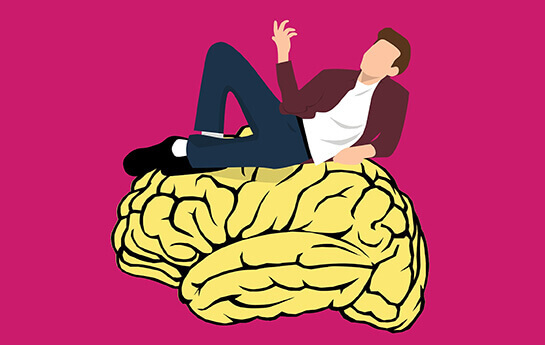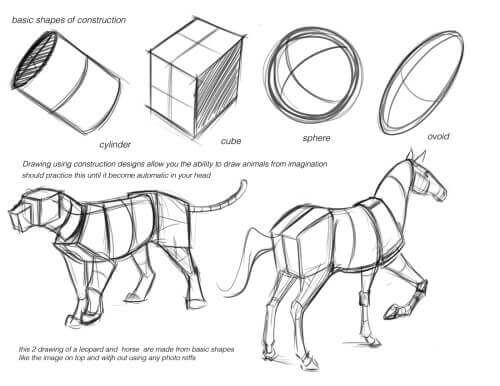Drawings speak to the brain! Did you know that the human brain uses “recognition” when it needs to understand something from the many impressions it gets bombarded with in a day? In fact, we identify objects based on recognizable patterns, such as circles and squares. And you can use that in your communication.

Your brain loves basic shapes
The human brain finds and recognizes simple geometric shapes (such as a cylinder, circle, triangle, etc.) when it needs to analyze and understand all the data that our eyes record and interpret. Think of a starfish. What does it look like? It looks like a star, doesn’t it? It is easy to recognize in its shape.
Similarly, it is easy to recognize the icon for an iPhone – a square with round corners. Or a washing machine – a square with a circle (the door). It is something that visual artists, illustrators and designers know and have used to their advantage for years. Most illustrators usually combine different basic shapes in their sketches – when drawing everything from animals to people, cars, buildings, airplanes. And you can also use that to your advantage in your visual communication.

Illustration is a language
In reality, we have a lot of letters in our written language that can be put together into words. Similarly, in 1985, Irving Biederman found that there are 24 basic forms (geons) that serve as building blocks that we put together in drawings – or use to recognize every imaginable object.
Related: Visualize your strategy with cartoons
The canonical perspective
At the same time, our brains work in a way so that we naturally imagine objects (such as a coffee cup) in a slightly tilted perspective and seen from above. But how do we really know that for sure?
Well, in 1981 Stephen Palmer went around the world asking all sorts of different people to make drawings of a coffee cup. And the result was striking. Most of the drawings, were pretty much in the same perspective, the canonical perspective.
Illustration makes us remember
The clever thing about the canonical perspective is that it allows us to see many different surfaces at the same time. So we can see both the outside of the cup – and around the cup and down the cup. In this way we simply get the best and most recognizable perspective – and the most recognizable silhouette. In short, we humans recognize and remember things better when they appear in the canonical perspective! And here one would think that e.g. 3D images would be preferable. But it’s just the opposite, because our brain sees in 2D.
Related: Graphic facilitation helps you understand and remember
The brain sees in 2D
The brain actually favors 2D elements and drawings over 3D elements. It’s because our eyes communicate their inputs as 2D objects to the brain. 3D images on e.g. a screen can actually reduce recognizability and understanding.
This is exactly why 2D animation films and drawings are so effective and good at explaining content. And it’s actually not that childish or unconventional to choose 2D animations or drawings in your communication instead of 3D. It’s actually common sense.